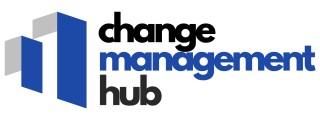
What is the procurement maturity model?
Building Blocks for Procurement Excellence
Procurement maturity models are essential tools that help organizations assess and improve their procurement function. These models provide a structured framework to evaluate how advanced procurement practices are within a business, from basic transactional activities to strategic sourcing and category management. By understanding procurement maturity, organizations can identify gaps, set clear business goals, and align procurement strategy with overall company objectives.
At its core, a procurement maturity model breaks down the procurement process into distinct stages. Each stage reflects a different level of capability, ranging from ad hoc purchasing to integrated, strategic procurement. This staged approach enables procurement teams to benchmark their current practices, measure progress, and focus on long term improvements.
Key elements often assessed in a maturity model include:
- Strategic alignment of procurement with business goals
- Use of data and digital tools for sourcing procurement and supplier management
- Development of procurement category strategies
- Adoption of best practices in risk management and cost savings
- Level of collaboration across the supply chain
Understanding procurement maturity is not just about cost control. It’s about transforming procurement into a value driver for the organization. As procurement organizations progress through the maturity stages, they move from a focus on simple transactions to a more strategic, insights-driven approach. This shift supports better decision making, stronger supplier relationships, and improved category management.
For those interested in deepening their knowledge and skills in this area, exploring resources like unlocking the potential of release academy in change management can provide valuable insights into advancing procurement excellence.
Key stages of procurement maturity
Levels of Procurement Excellence
Procurement maturity is not a one-size-fits-all concept. Organizations progress through different stages as they develop their procurement function, moving from basic processes to advanced, strategic practices. Understanding these stages helps procurement teams align their efforts with business goals and drive long-term value.
- Foundational Stage: At this initial level, procurement is mostly transactional. The focus is on basic sourcing, order processing, and cost control. There is limited use of data, and category management is often absent. Organizations at this stage may struggle with fragmented processes and inconsistent supplier management.
- Developing Stage: Here, organizations begin to standardize procurement processes and introduce some level of category management. Data collection improves, enabling better cost analysis and supplier insights. However, strategic procurement is still emerging, and risk management practices are often reactive rather than proactive.
- Advanced Stage: Procurement functions become more strategic, integrating digital tools and analytics to drive decision-making. Strategic sourcing and supplier collaboration are prioritized, and procurement teams align closely with business strategy. The focus shifts from short-term cost savings to long-term value creation and supply chain resilience.
- Leading Stage: At this maturity level, procurement is a driver of business innovation and competitive advantage. Organizations leverage advanced data insights, robust risk management, and best practices in category management. Procurement excellence is embedded in the culture, supporting enterprise-wide transformation and continuous improvement.
Each stage presents unique challenges and opportunities. As organizations advance, they must adapt their procurement strategy, invest in digital capabilities, and foster a culture of continuous learning. For a deeper dive into the complexities organizations face as they evolve, explore this guide on navigating enterprise change management.
| Stage | Focus | Key Characteristics |
|---|---|---|
| Foundational | Transactional | Basic processes, limited data, cost focus |
| Developing | Process Improvement | Standardization, emerging category management, better data |
| Advanced | Strategic | Digital tools, analytics, strategic sourcing, alignment with business |
| Leading | Excellence & Innovation | Procurement excellence, innovation, risk management, continuous improvement |
Recognizing where your organization stands on this maturity model is essential for setting realistic goals and implementing effective change management strategies. The journey toward procurement excellence is ongoing, requiring a clear understanding of current capabilities and a commitment to continuous progress.
How procurement maturity impacts change management
Why procurement maturity shapes successful change initiatives
Procurement maturity is more than a buzzword—it’s a critical factor in how organizations manage change. As procurement teams move through different stages of maturity, their ability to support strategic business goals, drive cost savings, and manage risk improves. This evolution directly influences the effectiveness of change management efforts across the procurement function.
- Strategic alignment: Mature procurement organizations align sourcing and category management with overall business strategy. This alignment ensures that change initiatives are not isolated projects but part of a broader organizational focus, making adoption smoother and more impactful.
- Data-driven decisions: At higher maturity stages, procurement teams leverage digital tools and robust data insights. This capability allows for better tracking of procurement processes, supplier performance, and cost management, which are essential for managing change and measuring progress.
- Integrated risk management: As organizations advance in procurement maturity, risk management becomes embedded in sourcing and supplier strategies. This proactive approach helps anticipate challenges during change initiatives, reducing disruptions in the supply chain.
- Category excellence: Mature procurement practices emphasize category management and strategic sourcing. This focus enables procurement teams to identify opportunities for long-term improvements and cost savings, supporting sustainable change.
Organizations at early maturity stages may struggle with fragmented processes and limited insights, making change management more challenging. In contrast, those with advanced procurement maturity can implement best practices, foster collaboration, and sustain improvements more effectively. For a deeper dive into fostering a culture of procurement excellence and how it supports change, explore this blog on fostering a culture of excellence.
Common challenges in advancing procurement maturity
Barriers That Slow Procurement Maturity
Procurement organizations often encounter significant hurdles as they move through the stages of maturity. These challenges can impact the effectiveness of change management and slow progress toward strategic procurement excellence. Understanding these obstacles is essential for procurement teams aiming to align their procurement strategy with broader business goals.
- Limited data and insights: Many organizations struggle with fragmented or poor-quality data. Without reliable data, it becomes difficult to drive category management, measure cost savings, or implement best practices in sourcing procurement.
- Lack of digital tools: Outdated systems and manual processes can hinder the procurement function. Digital transformation is often required to support advanced procurement practices and enable strategic sourcing.
- Resistance to change: Procurement teams may face pushback from within the organization, especially when introducing new processes or shifting the focus from transactional to strategic procurement. This resistance can slow the adoption of new procurement strategies.
- Skills and capability gaps: Advancing through the maturity model requires specialized knowledge in areas like risk management, supplier strategy, and category management. Organizations may lack the necessary expertise to move to the next stage.
- Misalignment with business objectives: If procurement goals are not aligned with the overall business strategy, it can lead to missed opportunities for cost savings, value creation, and long-term supply chain resilience.
- Supplier relationship challenges: Building strategic supplier partnerships is critical at higher maturity stages. However, organizations may struggle to move beyond basic transactional relationships.
Why These Challenges Matter
Each barrier can stall progress and make it harder for procurement organizations to achieve procurement excellence. For example, without a focus on data and digital tools, it is difficult to gain the insights needed for effective category management or to optimize sourcing strategies. Similarly, resistance to change can undermine even the most well-designed procurement processes.
Addressing these challenges requires a clear understanding of the maturity model and a commitment to continuous improvement. By recognizing common pitfalls, procurement teams can better prepare for the journey toward strategic procurement and long-term business value.
Strategies to enhance procurement maturity
Building Capabilities for Procurement Excellence
Organizations aiming to advance their procurement maturity need to focus on developing both people and processes. Investing in training for procurement teams is essential. This helps teams understand category management, strategic sourcing, and risk management, which are all critical for aligning procurement practices with business goals. Encouraging cross-functional collaboration also supports a more strategic approach to sourcing and supplier management.Leveraging Digital Tools and Data Insights
Digital transformation is a key driver for procurement excellence. Implementing digital procurement solutions can automate routine tasks, provide real-time data, and improve visibility across the supply chain. With better data, procurement organizations can make informed decisions, identify cost savings, and manage risks more effectively. Using analytics to track procurement category performance and supplier relationships supports continuous improvement.Embedding Best Practices and Strategic Focus
To move up the maturity model, organizations should standardize procurement processes and adopt best practices. This includes establishing clear procurement strategies, focusing on long-term value rather than just cost reduction, and integrating procurement into overall business strategy. Regularly reviewing procurement function performance and benchmarking against industry standards helps maintain a strategic focus.- Develop clear procurement policies and guidelines
- Promote category management and strategic sourcing
- Encourage supplier collaboration for innovation
- Align procurement goals with broader business objectives
Fostering a Culture of Continuous Improvement
Sustaining procurement maturity requires a commitment to ongoing learning and adaptation. Procurement teams should seek insights from industry blogs and professional networks to stay updated on trends and best practices. Regular feedback loops and performance reviews help identify areas for improvement. By embedding a culture of continuous improvement, organizations can ensure their procurement function remains agile and aligned with changing business needs.| Strategy | Impact on Procurement Maturity |
|---|---|
| Digital adoption | Enhances data-driven decision making and process efficiency |
| Category management | Improves cost savings and supplier relationships |
| Continuous training | Builds expertise and supports strategic procurement |
| Process standardization | Drives consistency and supports long-term business goals |
Measuring progress and sustaining improvements
Tracking Progress with Meaningful Metrics
For organizations aiming to achieve procurement excellence, measuring progress is not just about tracking spend or cost savings. It involves a comprehensive approach that evaluates how procurement maturity evolves across different categories and stages. Procurement teams should focus on a mix of quantitative and qualitative metrics to capture improvements in sourcing, supplier management, risk management, and digital adoption.
- Category management: Assess how effectively procurement categories are managed, from strategic sourcing to supplier collaboration.
- Process efficiency: Monitor cycle times, automation rates, and the integration of digital tools in procurement practices.
- Cost savings: Track realized and forecasted savings, but also consider value creation beyond just cost reduction.
- Supplier performance: Use data-driven insights to evaluate supplier reliability, innovation, and risk mitigation.
- Stakeholder satisfaction: Gather feedback from internal business partners to understand the impact of procurement strategies on business goals.
Embedding Continuous Improvement
Sustaining improvements in procurement maturity requires a long term commitment to continuous improvement. Organizations should regularly review their procurement strategy, update best practices, and encourage procurement teams to share insights and lessons learned. This helps maintain momentum and ensures that the procurement function stays aligned with evolving business needs and supply chain dynamics.
Some practical steps include:
- Establishing regular maturity assessments to benchmark progress against the maturity model
- Setting clear, strategic objectives for each procurement category and sourcing initiative
- Investing in digital tools that support data-driven decision making and process transparency
- Fostering a culture of knowledge sharing through internal blogs or workshops
- Aligning procurement practices with broader organizational strategy for greater impact
Adapting to Change and Staying Resilient
As procurement organizations advance through maturity stages, they must remain agile and responsive to changes in the business environment. This means regularly revisiting risk management frameworks, updating sourcing procurement strategies, and ensuring that procurement teams are equipped to handle new challenges. By embedding adaptability and a focus on long term value, organizations can sustain improvements and drive strategic procurement outcomes.













